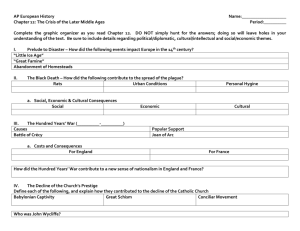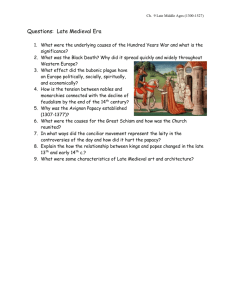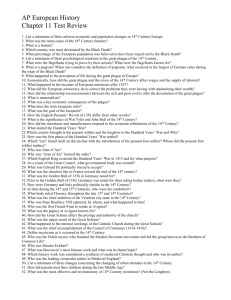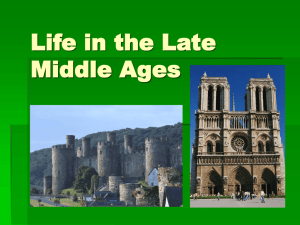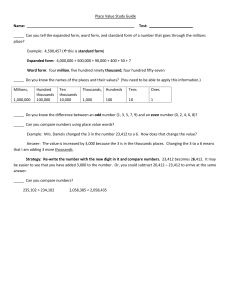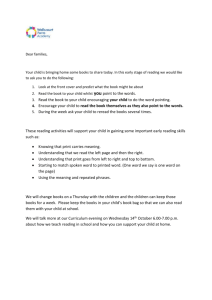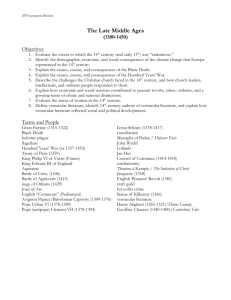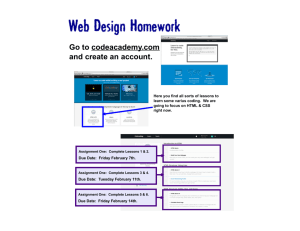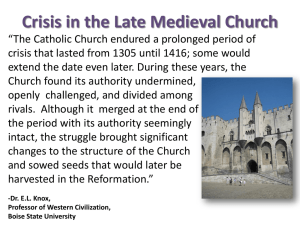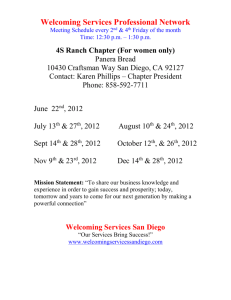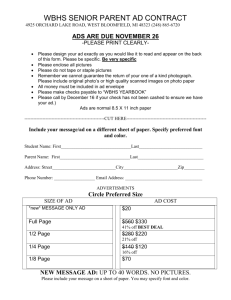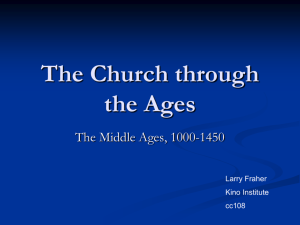Chapter 11 Study Guide - Chesapeake Public Schools
advertisement
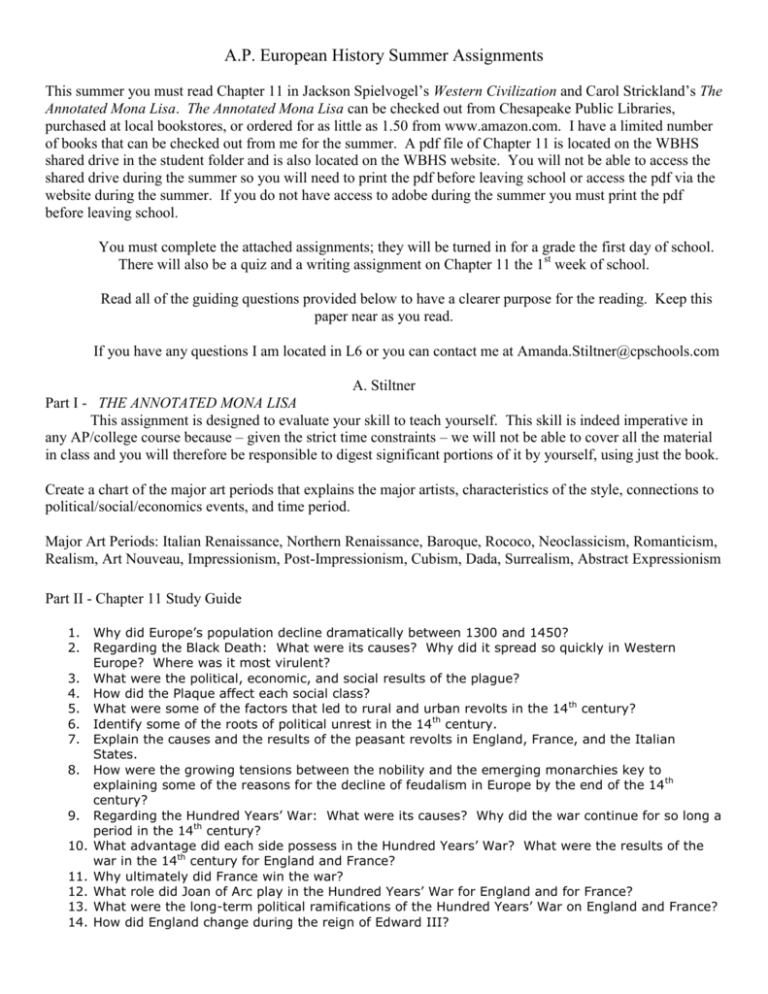
A.P. European History Summer Assignments This summer you must read Chapter 11 in Jackson Spielvogel’s Western Civilization and Carol Strickland’s The Annotated Mona Lisa. The Annotated Mona Lisa can be checked out from Chesapeake Public Libraries, purchased at local bookstores, or ordered for as little as 1.50 from www.amazon.com. I have a limited number of books that can be checked out from me for the summer. A pdf file of Chapter 11 is located on the WBHS shared drive in the student folder and is also located on the WBHS website. You will not be able to access the shared drive during the summer so you will need to print the pdf before leaving school or access the pdf via the website during the summer. If you do not have access to adobe during the summer you must print the pdf before leaving school. You must complete the attached assignments; they will be turned in for a grade the first day of school. There will also be a quiz and a writing assignment on Chapter 11 the 1st week of school. Read all of the guiding questions provided below to have a clearer purpose for the reading. Keep this paper near as you read. If you have any questions I am located in L6 or you can contact me at Amanda.Stiltner@cpschools.com A. Stiltner Part I - THE ANNOTATED MONA LISA This assignment is designed to evaluate your skill to teach yourself. This skill is indeed imperative in any AP/college course because – given the strict time constraints – we will not be able to cover all the material in class and you will therefore be responsible to digest significant portions of it by yourself, using just the book. Create a chart of the major art periods that explains the major artists, characteristics of the style, connections to political/social/economics events, and time period. Major Art Periods: Italian Renaissance, Northern Renaissance, Baroque, Rococo, Neoclassicism, Romanticism, Realism, Art Nouveau, Impressionism, Post-Impressionism, Cubism, Dada, Surrealism, Abstract Expressionism Part II - Chapter 11 Study Guide 1. 2. 3. 4. 5. 6. 7. 8. 9. 10. 11. 12. 13. 14. Why did Europe’s population decline dramatically between 1300 and 1450? Regarding the Black Death: What were its causes? Why did it spread so quickly in Western Europe? Where was it most virulent? What were the political, economic, and social results of the plague? How did the Plaque affect each social class? What were some of the factors that led to rural and urban revolts in the 14 th century? Identify some of the roots of political unrest in the 14 th century. Explain the causes and the results of the peasant revolts in England, France, and the Italian States. How were the growing tensions between the nobility and the emerging monarchies key to explaining some of the reasons for the decline of feudalism in Europe by the end of the 14 th century? Regarding the Hundred Years’ War: What were its causes? Why did the war continue for so long a period in the 14th century? What advantage did each side possess in the Hundred Years’ War? What were the results of the war in the 14th century for England and France? Why ultimately did France win the war? What role did Joan of Arc play in the Hundred Years’ War for England and for France? What were the long-term political ramifications of the Hundred Years’ War on England and France? How did England change during the reign of Edward III? 15. Identify the major “power centers” in 14th century Italy (be sure to list their strengths and weaknesses, different government structures, and the types of societies and trade enterprises characterized by each). 16. In what ways were the states of Italy able to gain relative stability in the 15 th century? 17. Why did Germany and Italy fail to become strong, unified nations? 18. What were the issues at stake in the controversies between Pope Boniface VIII and the King of France? 19. What brought about the “Avignon Papacy?” 20. Identify some of the sources of church corruption in the 14th c. 21. What were the causes of the Great Schism? 22. What were the religious and political results of the Great Schism on Europe? 23. Explain how Marsiglio of Padua wanted to reform and strengthen the Christian community. 24. Summarize the claims Pope Boniface VIII made for papal authority in Unum Sanctum. 25. How did the Catholic laity respond both positively and negatively to the problems and corruption in the church? 26. What were some of the major ideas of William Ockham? 27. Why was Ockham considered to be the founders of Western scientific thought? 28. What was the goal of the conciliarist movement? 29. What were the main ideas of John Wycliffe and Jan Hus? 30. What was mysticism and how did it affect the church? 31. Comment on the following statement: The church as an institution was threatened from both those who believed too much and from those who believed too little. 32. What were some of the characteristics of Late Medieval art and architecture? 33. Why was Petrarch such a pivotal figure of the late Middle Ages? Why were his accomplishments? 34. Why did the late medieval writers begin to use their vernacular languages? What did they gain and what was lost by doing so? 35. Explain how fear, prejudice, greed, and superstition combined to cause the attack upon European Jews in 1349. 36. Describe parent-child relationships in the late Middle Ages? 37. Why was the clock such a revolutionary invention? 38. What was the Hanseatic League? How was the Hanseatic League a trade monopoly? 39. How did the adversities of the 14th century affect urban life and medical practices? 40. Identify some of the technological advances that changed European society by the early 15 th century? 41. What were the stereotypical images of women in the late medieval Europe? Terms/People to Know: Define using specific information – for people explain their contributions, the meaning and importance of textbooks, think of the historical significance of the term when defining. Yersinia pestis Christine de Pizan Statute of Labor Pogrom Longbow Taille Condottieri Papal States Clericos laicos Papal Bull Giotto Scholasticism Brothers of Common Life Golden Bull of Charles IV Giovanni Boccaccio The Book of the City of Ladies Flanders Calais Gabelle War of the Roses Geoffrey Chaucer Meister Eckhart lay investiture Battle of Crecy Jacquerie Flagellant Council of Constance The Decameron Ciompi Nominalism Battle of Poitiers Great Schism Battle of Orleans Conciliarism Battle of Agincourt Defender of the Peace French Estate General Mysticism Lollards Catherine of Sienna
